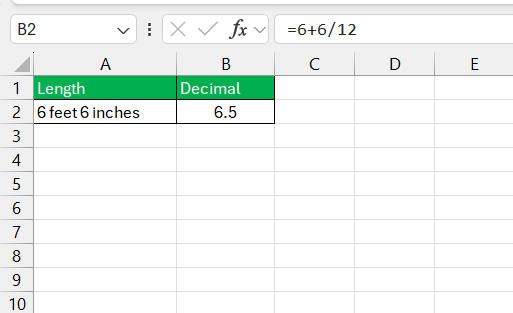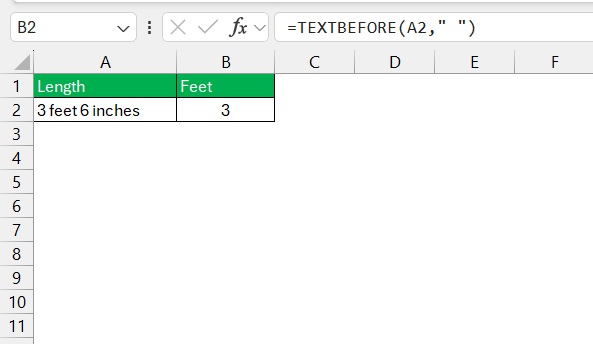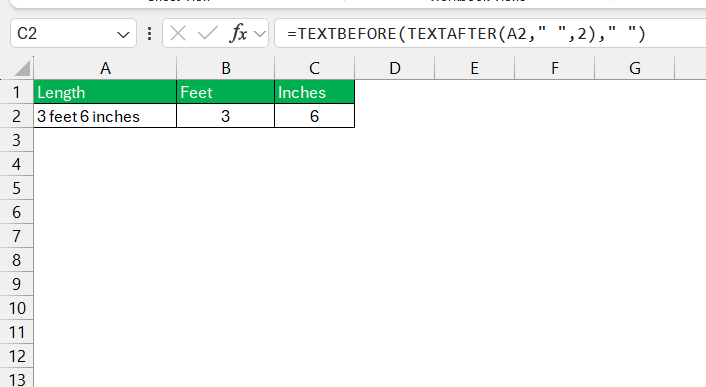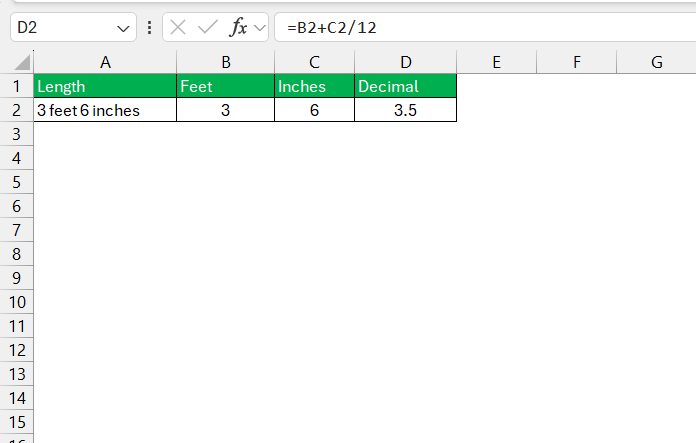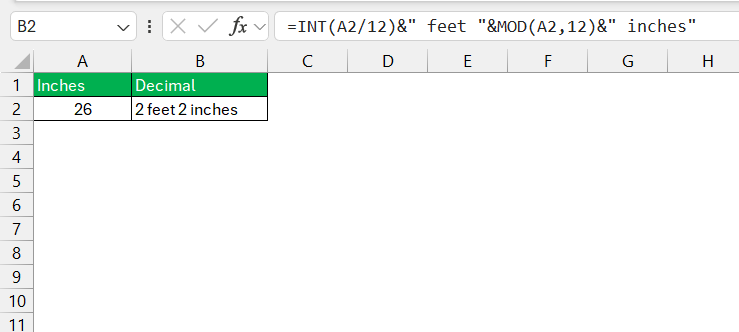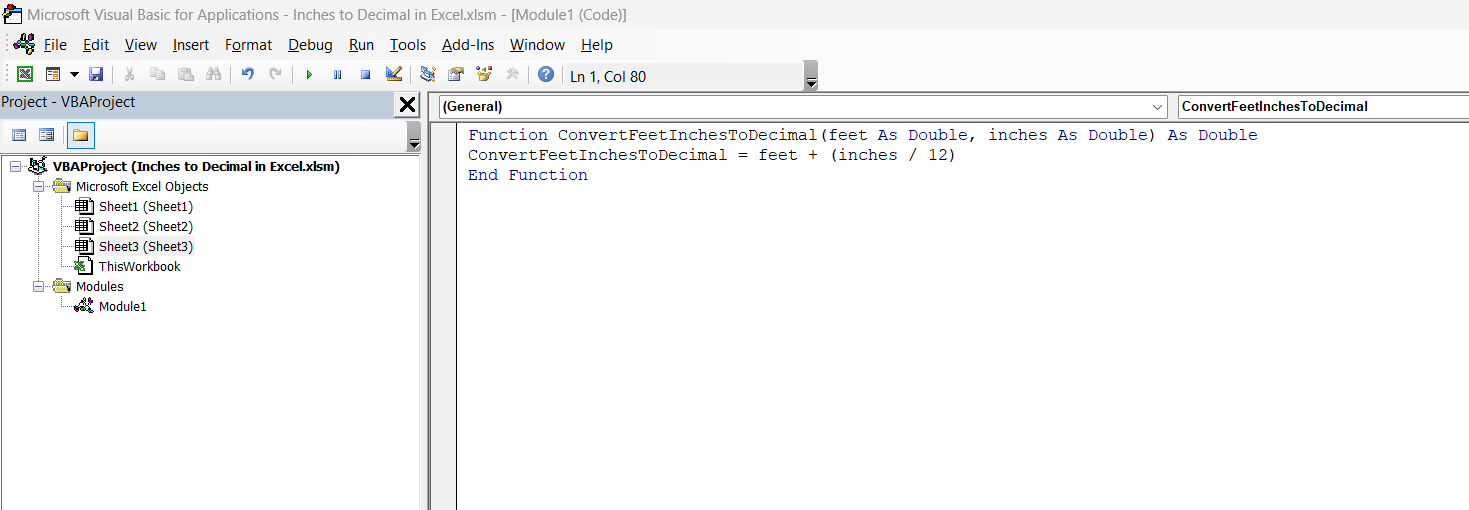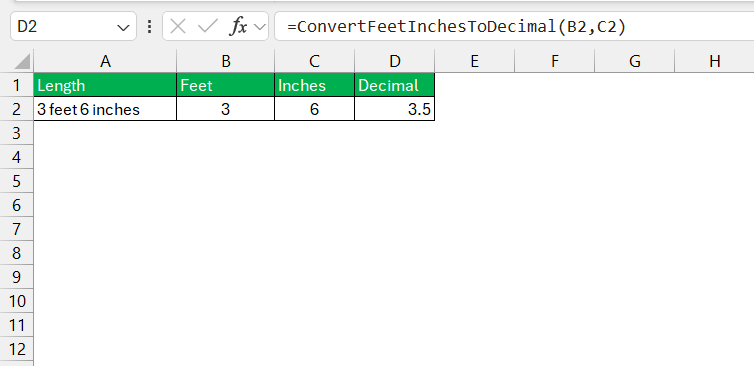Converting inches to decimal in Microsoft Excel involves transforming fractional inch measurements into the decimal format for easier calculations and data analysis. This process typically requires the use of mathematical formulas and functions within Excel to ensure accurate conversion. By understanding how to input and manipulate these values, users can streamline their data management and enhance the precision of their work.
Key Takeaways:
- Quickly converting feet and inches to decimal format ensures efficient and accurate data entry, crucial in fast-paced environments.
- Excel offers built-in functions and automation capabilities, making it ideal for measurement conversions and reducing manual errors.
- Excel allows both manual and automated conversion methods, catering to different needs, whether one-off calculations or routine conversions.
- Creating custom functions in Excel for repeated conversions saves time and ensures consistent accuracy across large datasets.
Table of Contents
Introduction to Quick Conversions
The Need for Speed in Measurements
In today’s fast-paced world, efficiency is key, especially when dealing with measurements. You may often find yourself in a situation where you have measurements in feet and inches that need to be quickly converted into a decimal format for reporting, analysis, or communication purposes.
Speed in converting these measurements is not just a convenience; it’s essential in ensuring accurate data entry, quick turnaround times, and streamlined operations.
Excel as a Tool for Conversion
Excel shines as a versatile tool for all kinds of data manipulation, including measurement conversions. Its built-in functions and the ability to automate tasks make it a go-to solution for converting feet and inches to decimals. Whether you’re an engineer, architect, or just someone who needs to perform conversions occasionally, Excel provides a powerful platform to make your work easier and error-free.
Understanding Feet and Inches in Decimal Format
Basics of the Decimal Measurement System
The decimal system, a cornerstone of modern measurement, is based on powers of ten, which simplifies calculation and conversion processes. Unlike the fractional measurements commonly used to represent inches, decimal measurements allow for straightforward, direct comparisons and are more compatible with digital systems.
When you’re working in various fields that require precision, like engineering or construction, understanding and utilizing decimal format becomes fundamental for accuracy and consistency in measurements.
Why Convert Feet and Inches to Decimal?
Converting feet and inches to decimals provides uniformity and ease when performing calculations, which is crucial in many technical and design fields. Decimal measurements are the standard for most engineering calculations, computer-aided design (CAD) programs, and other software tools.
They enable you to quickly perform addition, subtraction, multiplication, and division without the complicated steps often associated with fractional measurements. Whether you’re calculating area, preparing material estimates, or designing components, converting to decimal ensures that your data is precise and compatible with other measurement systems and software applications.
Step-by-Step Guide to Convert Feet and Inches to Decimal
Method 1 – Manual Conversion Method
When you don’t have the luxury of automatic tools, converting feet and inches to decimals manually is straightforward, though it can be time-consuming. Begin by taking the inches measurement and dividing it by 12 (since there are 12 inches in a foot) to convert it to a decimal. Add this value to the feet measurement, and you’ll have your decimal.
For example, if the measurement is 6 feet 6 inches, you would convert 6 inches into 0.5 feet (since 6 ÷ 12 = 0.5) and then add it to the 6 feet, resulting in 6.5 feet.
Method 2 – Using Formulas for Automatic Conversion
For those who crave efficiency and precision, Excel’s formulas are the magic wand. To convert feet and inches to decimal, you can use this formula in Excel: Separate the feet and the inches using the TEXTBEFORE() and TEXTAFTER() functions to handle them individually. Follow the steps below –
STEP 1: Extract feet using this formula: =TEXTBEFORE(A2,” “)
STEP 2: Extract inches using this formula: =TEXTBEFORE(TEXTAFTER(A2,” “,2),” “)
STEP 3: Now, take the value of feet and add it to the value of inches divided by 12.
It’s a nifty trick that turns what could be hours of work into a task that’s done in mere minutes.
For inches to feet, you have a formula that embraces simplicity: =INT(B5/12)&” feet “&MOD(B5,12)&” inches” to reverse the process. This will provide a neatly formatted string displaying feet and inches from a decimal measurement.
Excel’s formula magic doesn’t stop there. Excel is like a Swiss Army knife for data; you just need to choose the right tool—or formula, in this case!
Method 3 – Custom Functions for Repeated Use
If conversion is something you do on a routine basis, creating custom functions in Excel, also known as User-Defined Functions (UDFs), can save you an immense amount of time. Imagine a function where you simply input your feet and inches, and presto, the decimal value appears. To create a UDF, you’ll dive into the world of VBA, Excel’s programming language, and write a simple script that can be called upon any time you need a conversion.
Here’s a quick idea: the function could look like this:
Function ConvertFeetInchesToDecimal(feet As Double, inches As Double) As Double ConvertFeetInchesToDecimal = feet + (inches / 12) End Function
Place it in the VBA editor, and then use =ConvertFeetInchesToDecimal(B2, C2) in your Excel sheet, where B2 is the cell with the feet value and C2 is the cell with the inches.
Having a custom function can be especially beneficial when you’re working on large datasets. Instead of manually recalculating each time or copying and pasting the formula, a custom function gives you a permanent tool in your Excel toolkit.
Common Issues and Troubleshooting
Dealing with Inaccurate Results
Inaccurate results can stem from a variety of sources when converting feet and inches to decimals in Excel. It’s crucial to pinpoint the cause, whether it’s a mistake in the original data entry, an error in the formula syntax, or a misinterpretation of the resulting decimal values.
First and foremost, double-check your data for common entry mistakes, like misplaced apostrophes or quotation marks that denote feet and inches. Then, verify your formulas for accuracy and consistency. Remember to use parenthesis to ensure the correct order of operations, and consider Excel’s quirks with fractions and decimals.
If you’re still getting unexpected results, it may be a matter of Excel’s formatting options. Make sure that the cells where you input your formulas are set to the correct number format to display decimals.
Keep in mind that while Excel is a powerful tool, it is only as effective as the data and commands you input. Always cross-check your work to ensure precision in your conversions.
Real-World Applications of Decimal Conversions
Industry-Specific Scenarios Where Conversions Are Key
In industries such as construction, engineering, manufacturing, and even retail, where precise measurements are the lifeblood of various projects, the ability to accurately convert feet and inches to decimals is invaluable. Architects translate blueprints into materials lists, engineers calculate load requirements, and retailers may need to convert product dimensions for inventory management and shipping.
Consider a construction manager who needs to order the correct length of piping for a new building; getting the decimal conversion right ensures the correct materials arrive on-site, keeping the project on schedule and within budget.
By mastering quick and precise conversions in Excel, you can deliver not only in terms of speed but also in reducing costly errors that might arise from miscommunication or miscalculation of measurements.
Case Studies: Streamlining Workflows with Fast Conversions
The practicality of fast conversions in Excel is best illustrated by real-world successes. Take, for example, a fabrication company that implemented an Excel-based system for converting dimensions of custom parts into decimals. This not only expedited the estimation process but also streamlined the input for CNC machinery, reducing errors and material waste.
Or the interior design firm that used Excel conversions to quickly adjust their designs to fit the metric dimensions preferred by their overseas suppliers, ensuring accuracy in orders and avoiding costly return shipments.
By integrating quick conversion techniques into their workflows, professionals across various industries have found that they can focus more on the creative and problem-solving aspects of their work, trusting Excel to handle the meticulous calculations.
FAQs
How do you convert inches to decimals?
To convert inches to decimals, divide the number of inches by 12, since there are 12 inches in a foot. For example, for 8 inches, you would do 8 ÷ 12, giving you 0.667 as a decimal. This conversion allows you to work more easily with other measurements and is commonly used in various fields and applications.
How do I convert feet and inches to decimal format using Excel?
In Excel, you can convert feet and inches to decimal format using the formula: =TEXTBEFORE(A2,"'")+TEXTBEFORE(TEXTAFTER(A2,"'"),"""")/12. Simply replace A2 with the cell containing your measurement. This formula extracts the feet and inches from a text string and converts the inches to a decimal of a foot, then adds it to the feet for the final decimal value.
Can I create a reusable template for converting measurements in Excel?
Absolutely! Creating a reusable template for conversions in Excel is a savvy move. Start by setting up a spreadsheet with designated input areas for feet and inches, and include cells where the formulas for conversion are pre-entered. Save this format and every time you need to do a conversion, input your measurements and let the formulas do the work. This template can be used repeatedly, ensuring consistent and accurate conversions every time.
How do I format inches in Excel?
To format inches in Excel, right-click on the cell or range of cells you wish to format, select ‘Format Cells‘, and choose ‘Custom. In the Type box, enter “##”” to display inches. This will format the cell to show numbers followed by a double-quote symbol, indicating inches. Remember to calculate your values accordingly before applying this format for the correct display.
How to convert decimal to inches?
To convert decimal feet to inches in Excel, simply take the decimal fraction of the feet and multiply it by 12, since one foot is equal to 12 inches. For instance: =(A2-INT(A2))*12, where A2 contains the decimal. This will give you the inch portion. Pair it with an INT() function to separate the feet, and you have both measurements.
John Michaloudis is a former accountant and finance analyst at General Electric, a Microsoft MVP since 2020, an Amazon #1 bestselling author of 4 Microsoft Excel books and teacher of Microsoft Excel & Office over at his flagship MyExcelOnline Academy Online Course.

